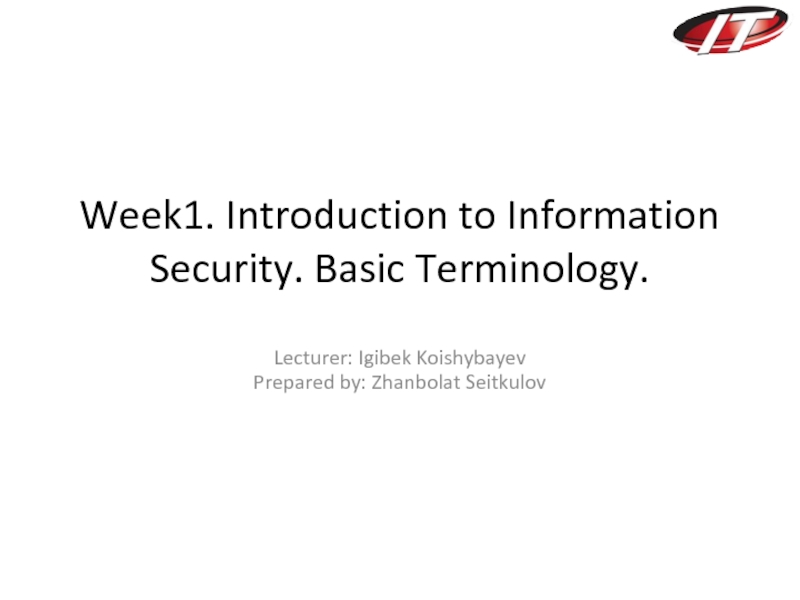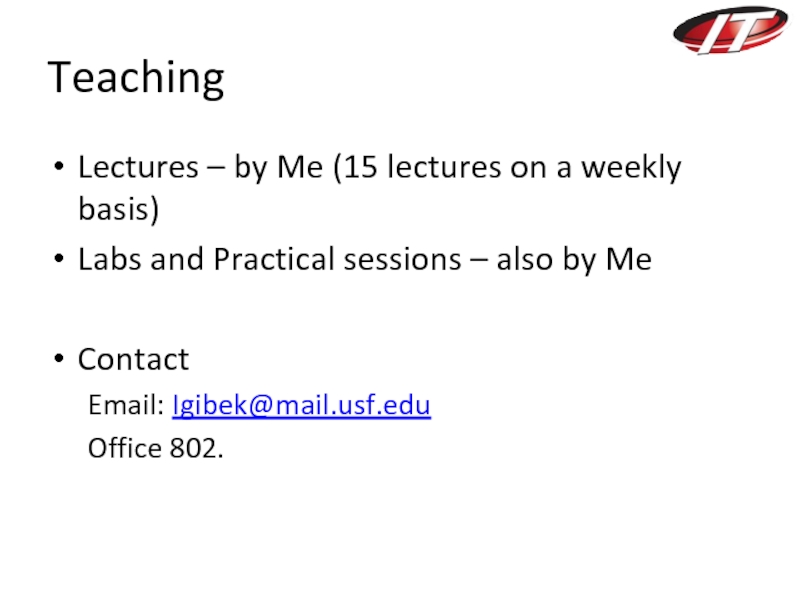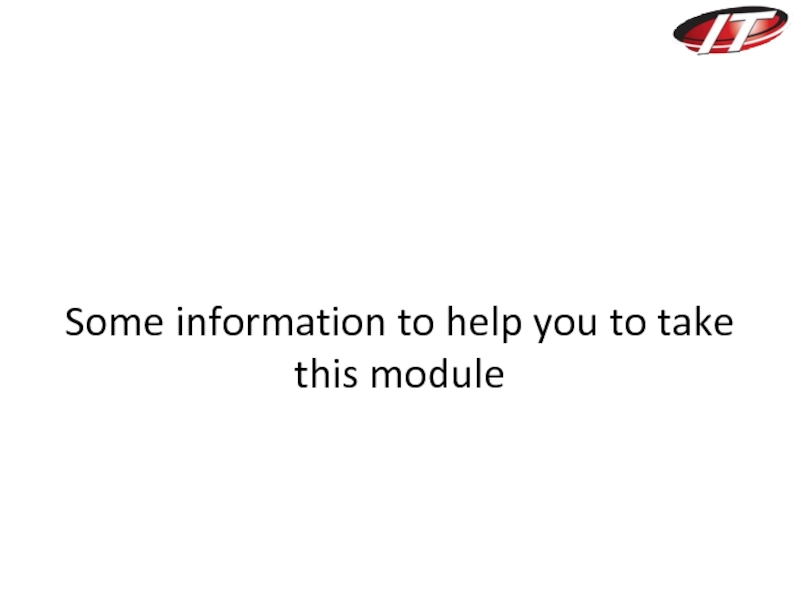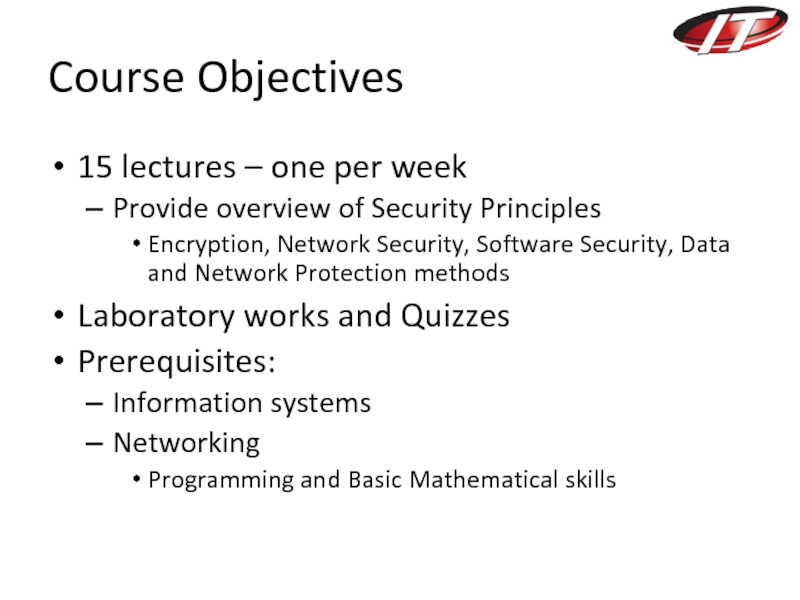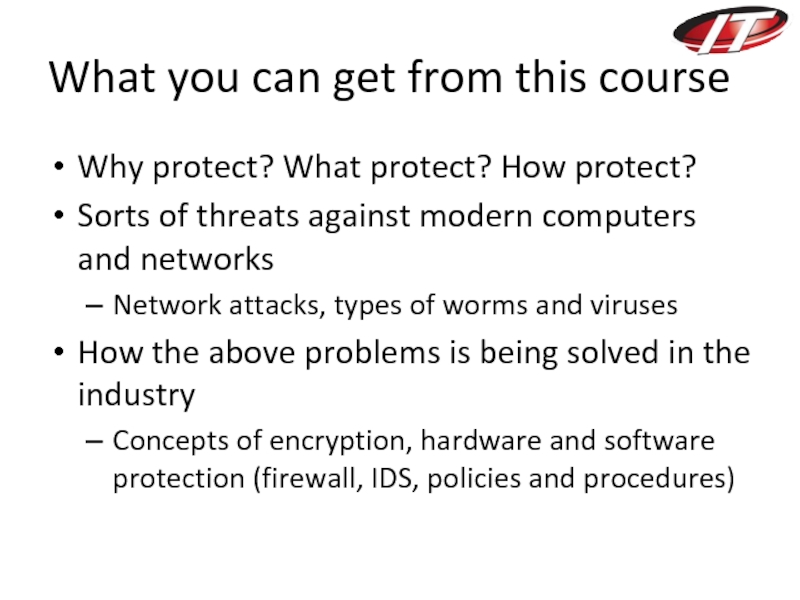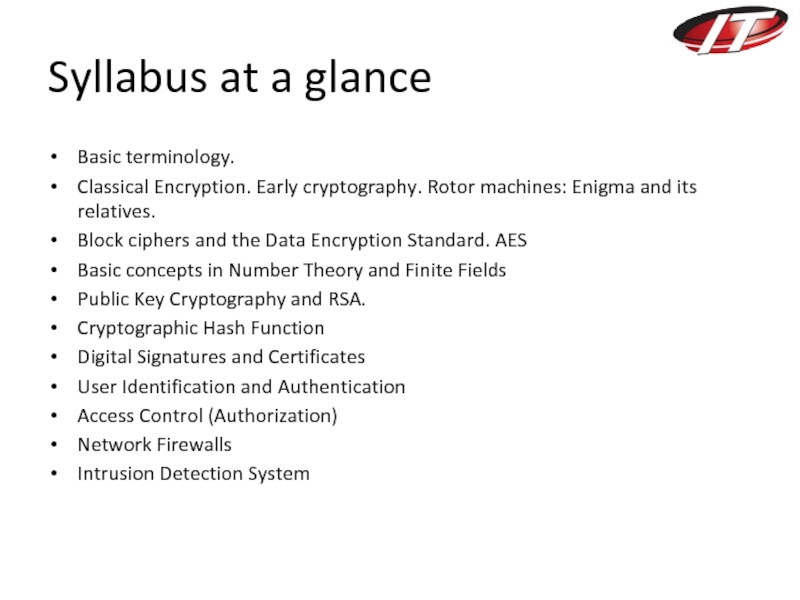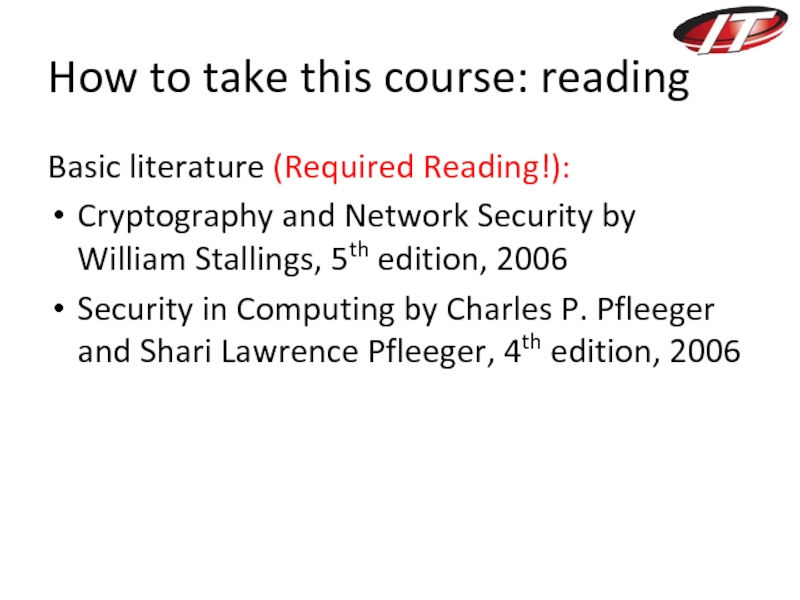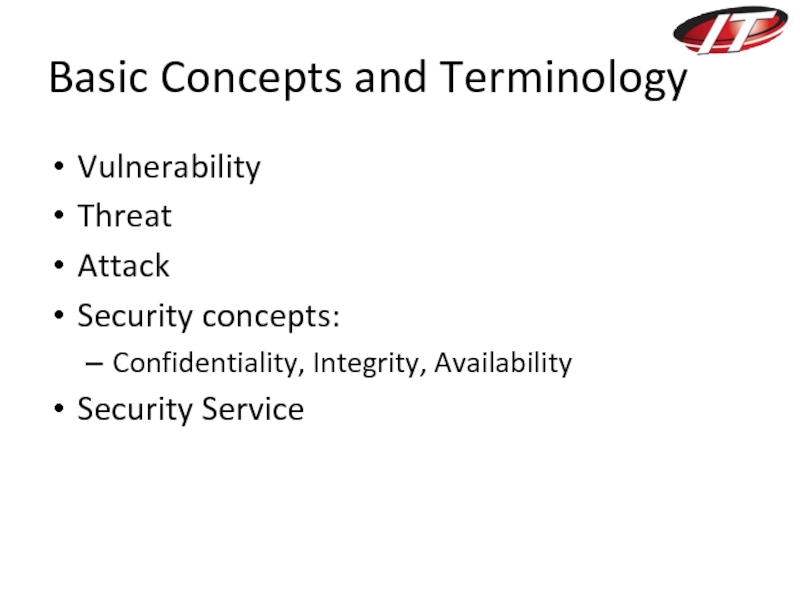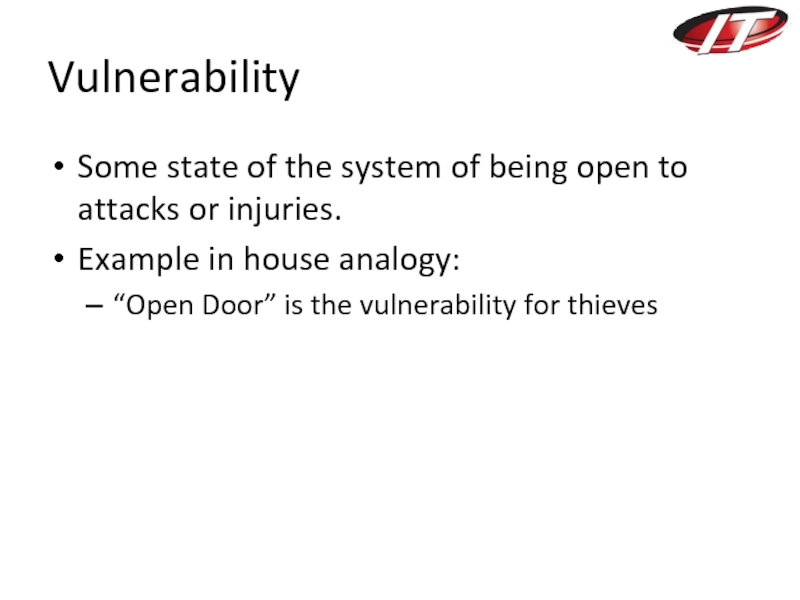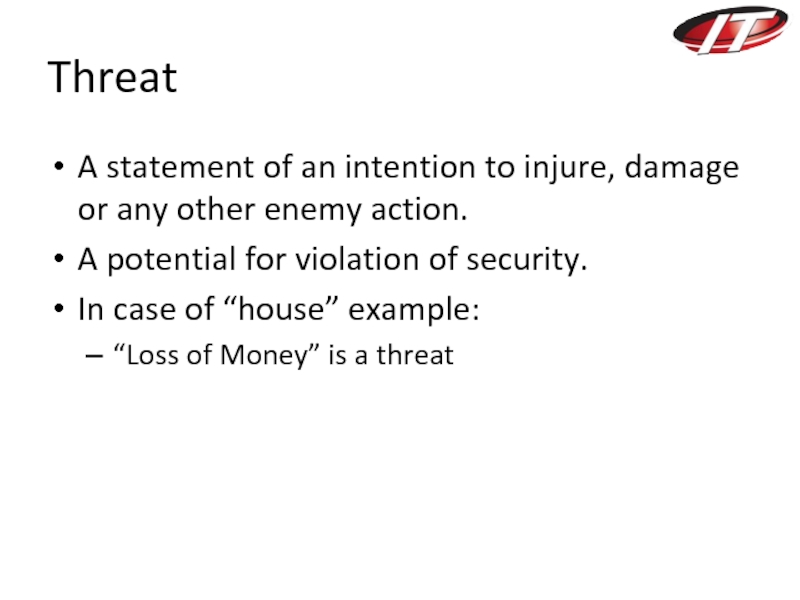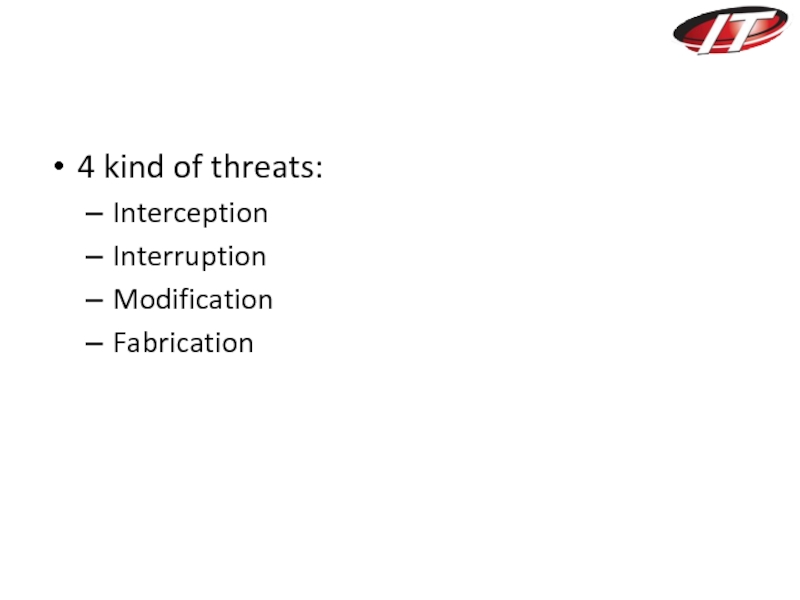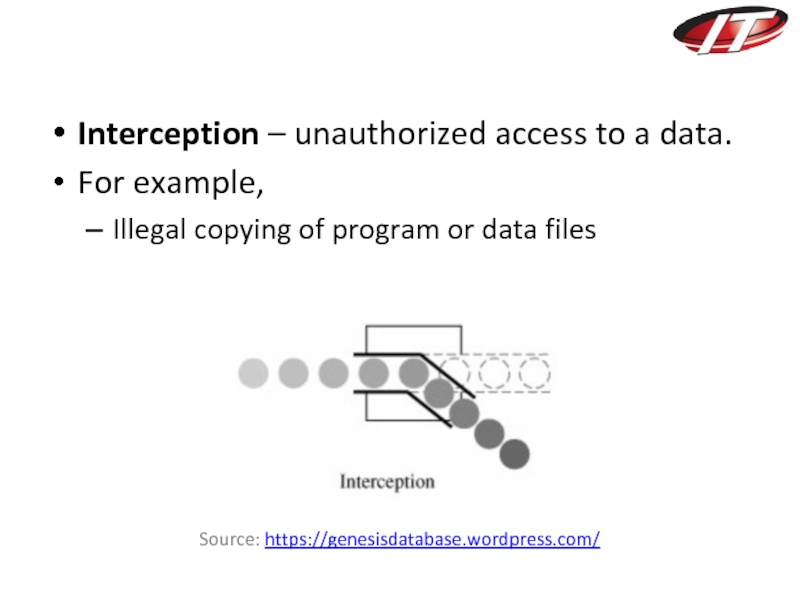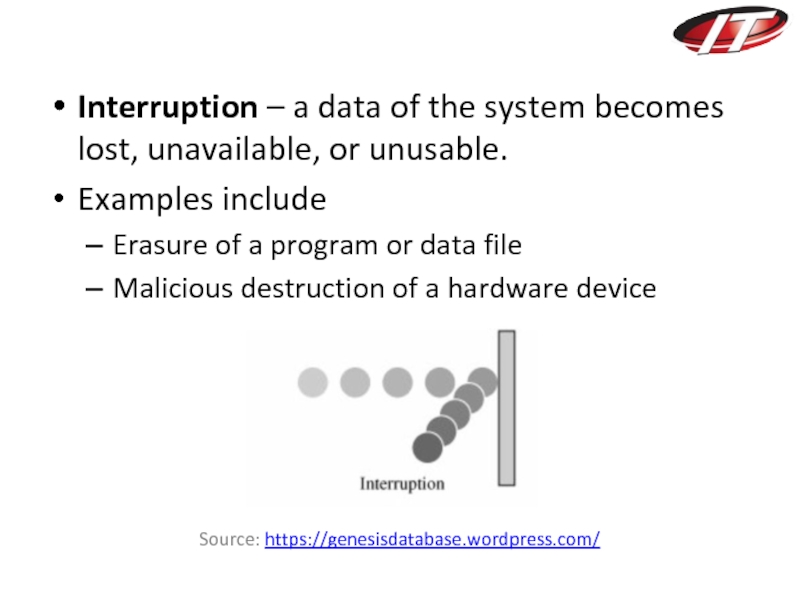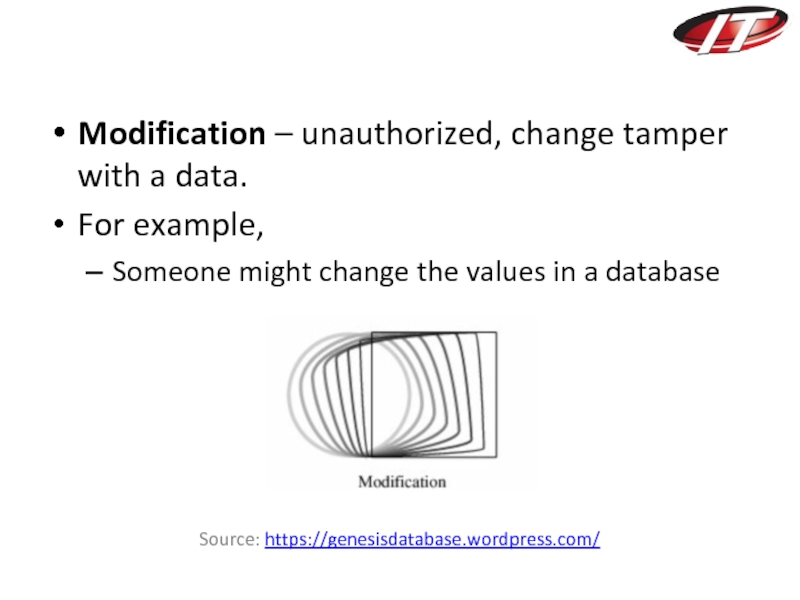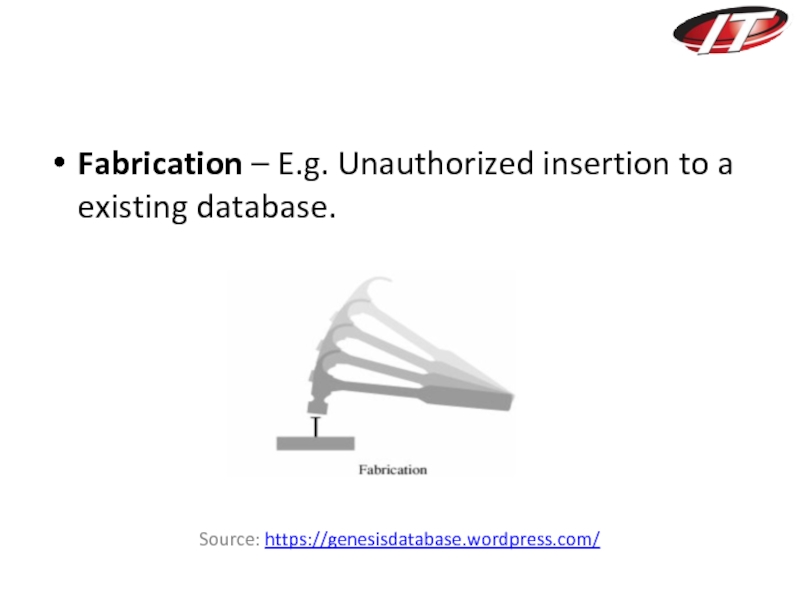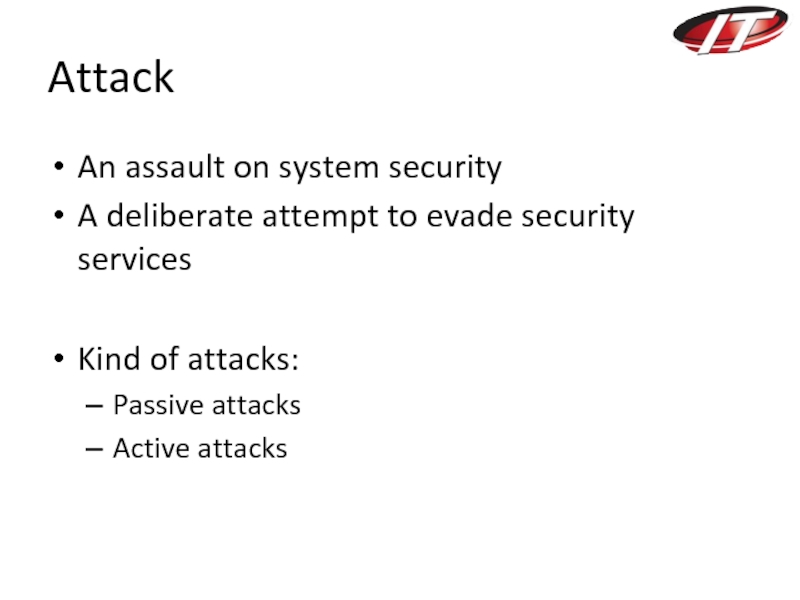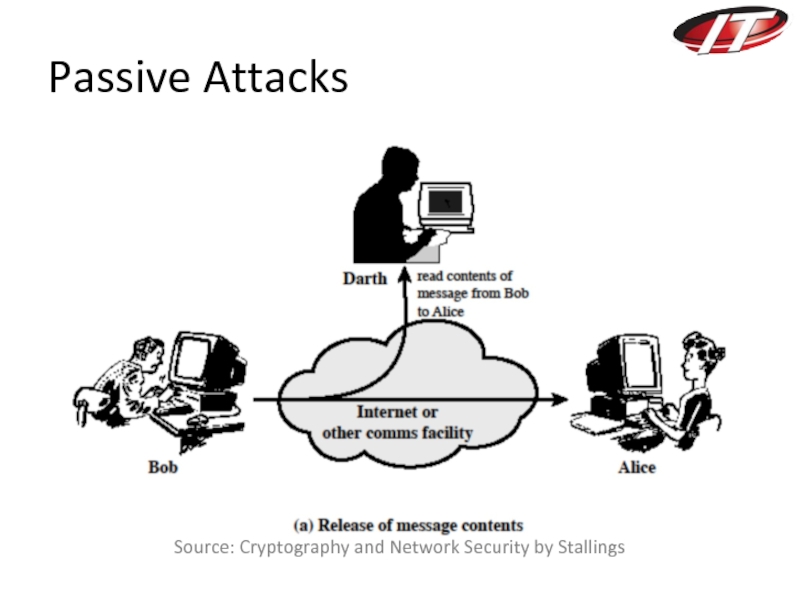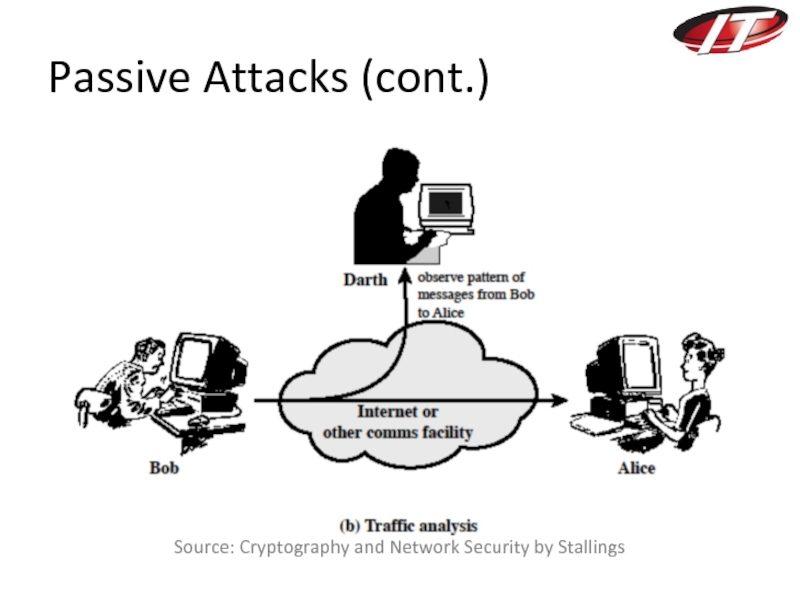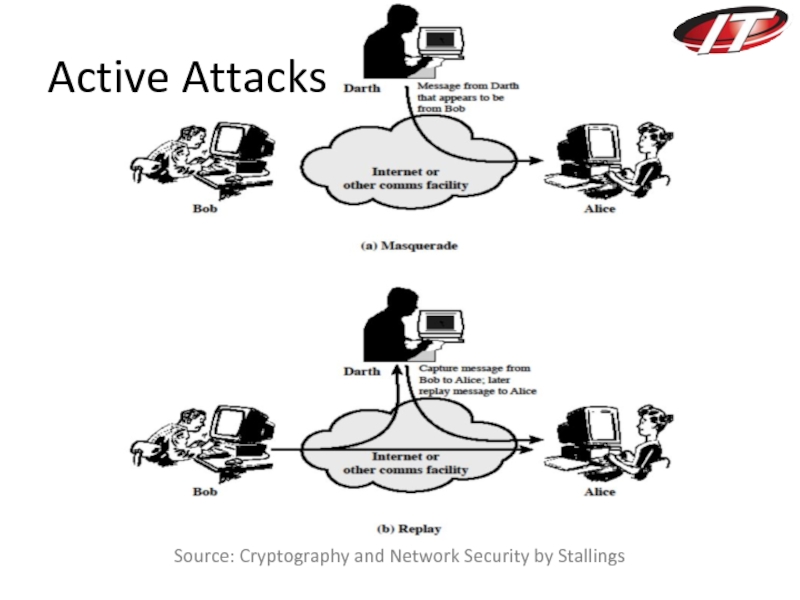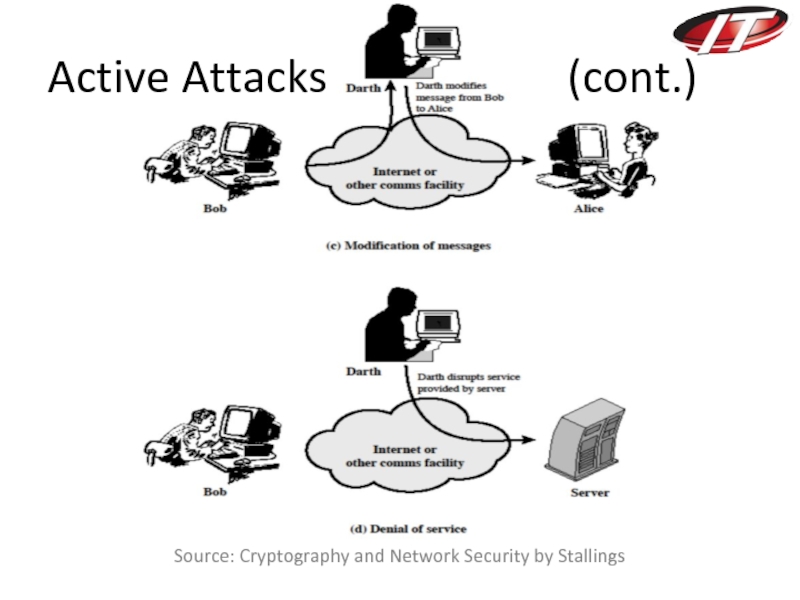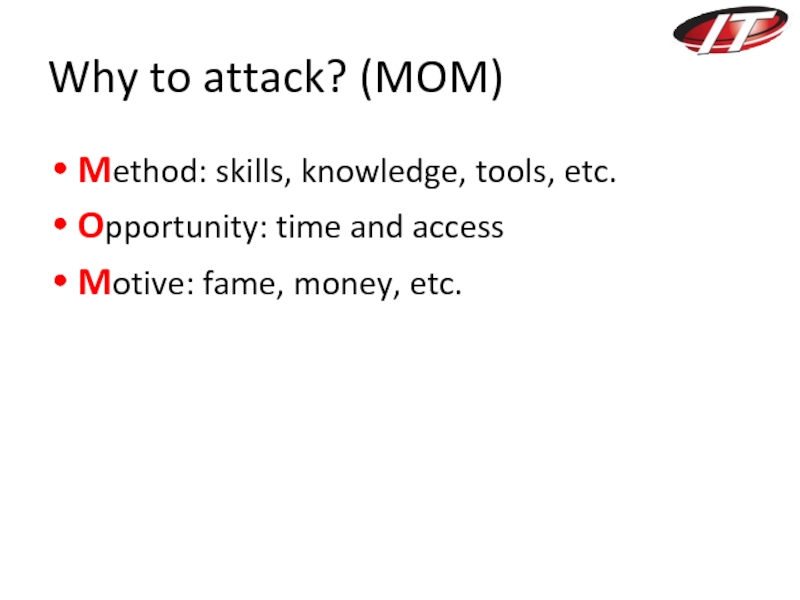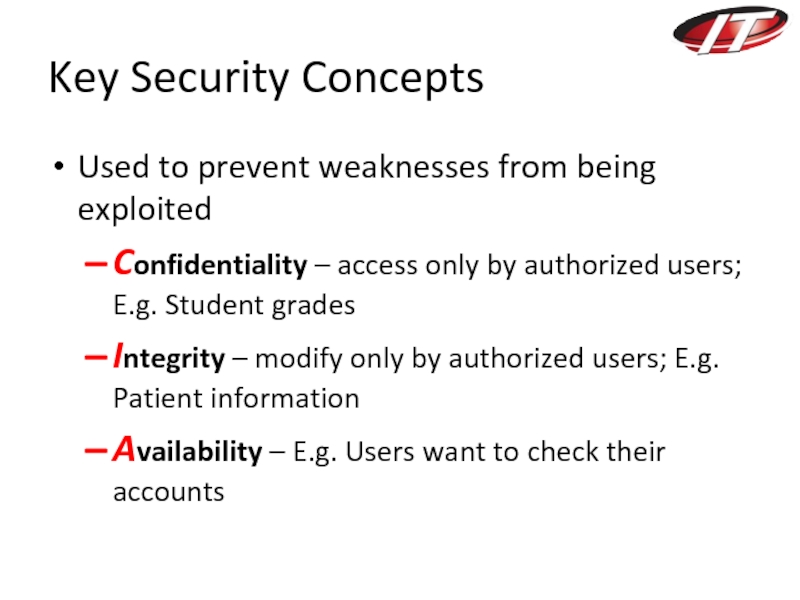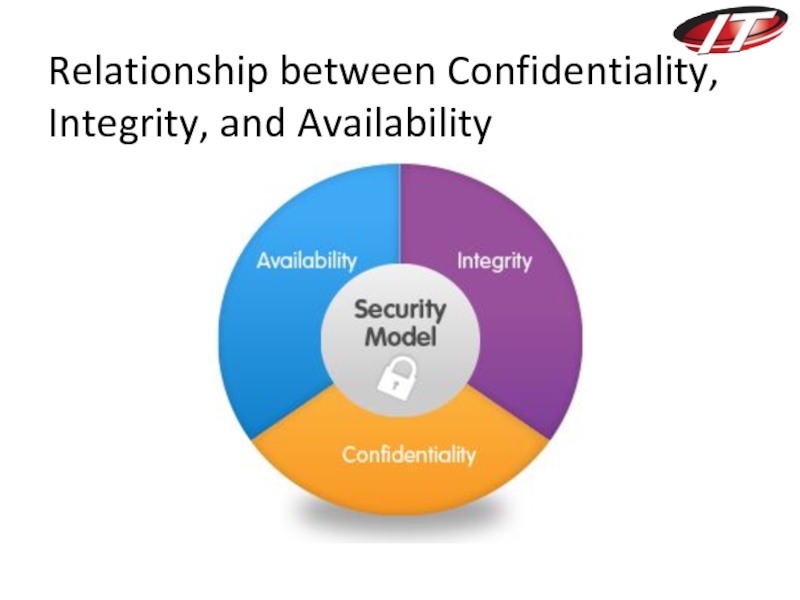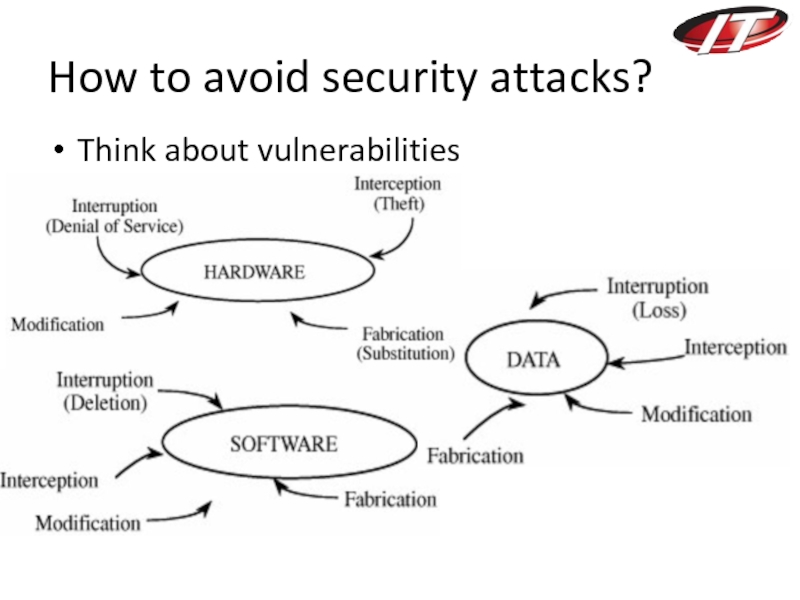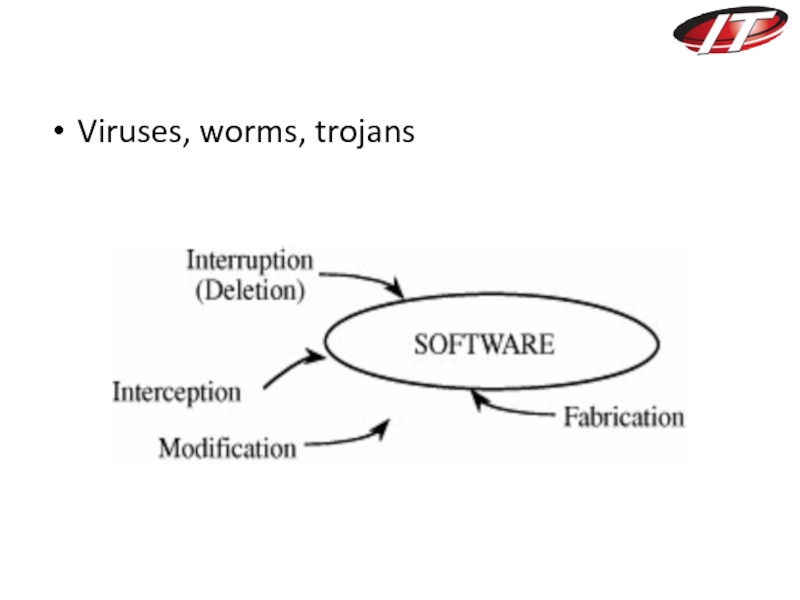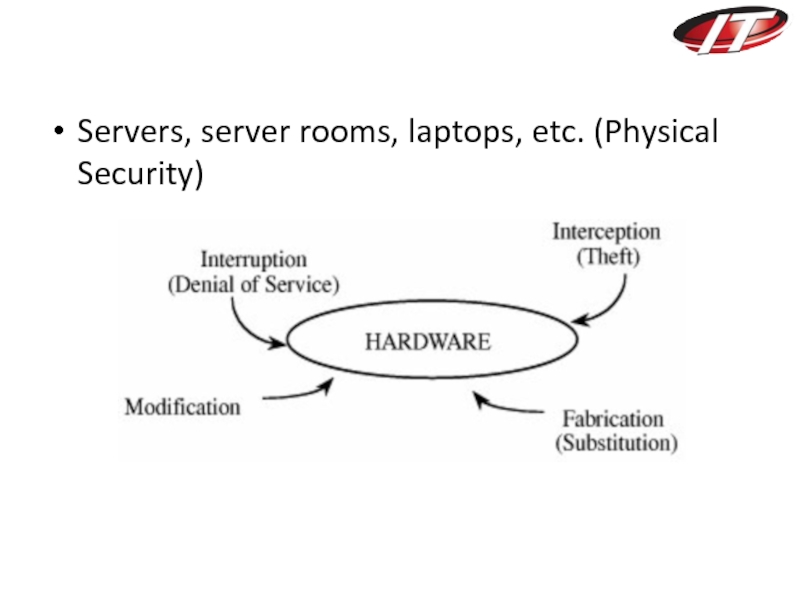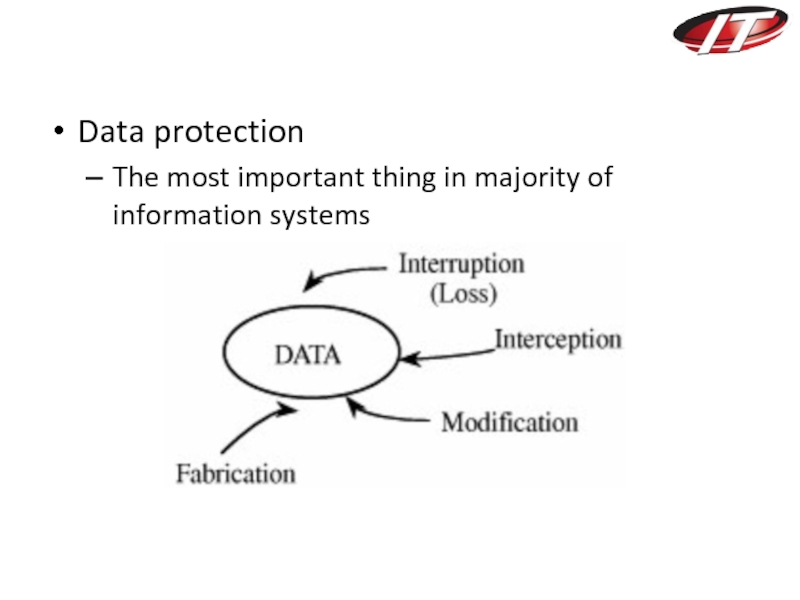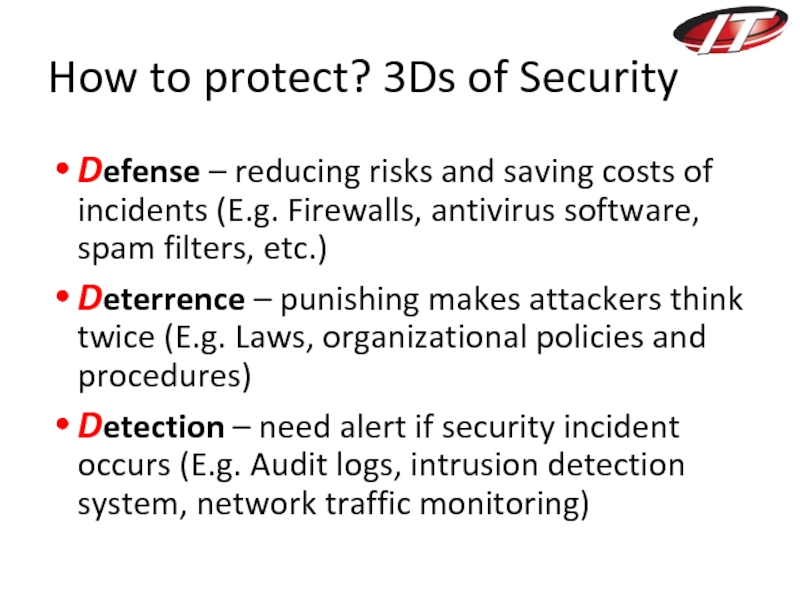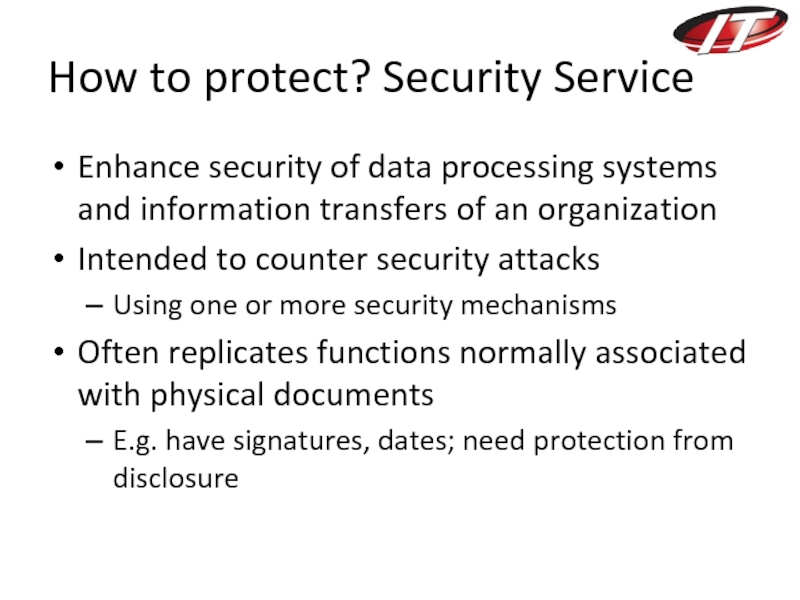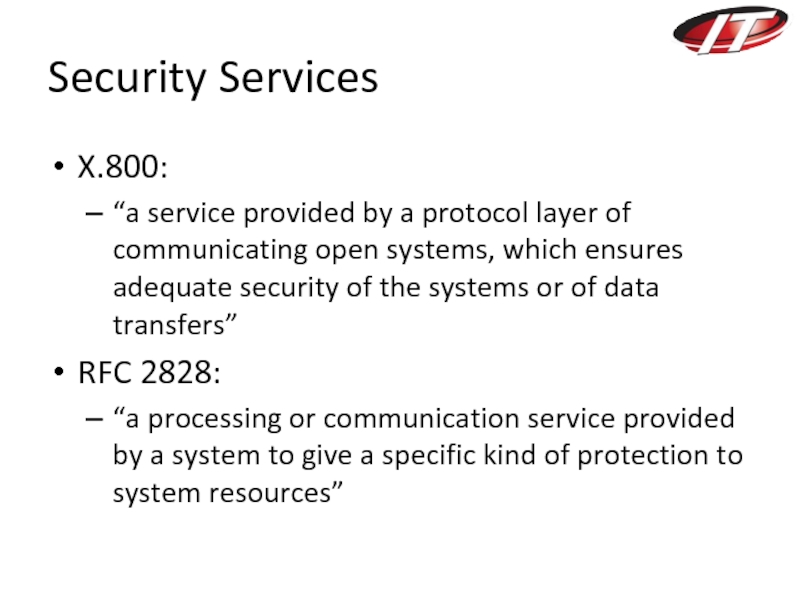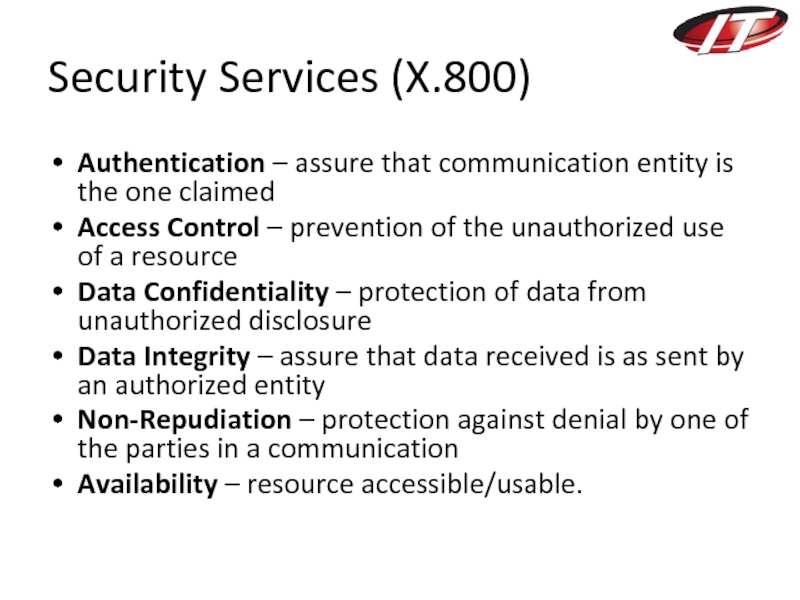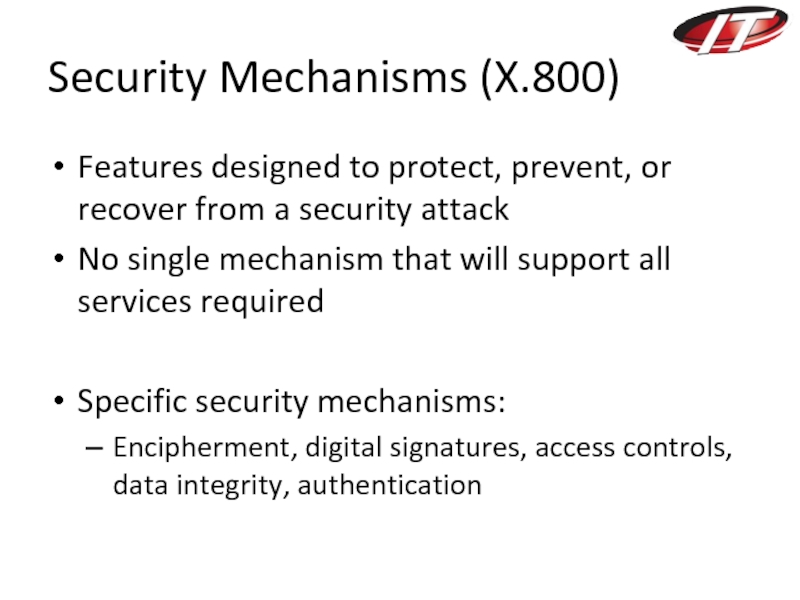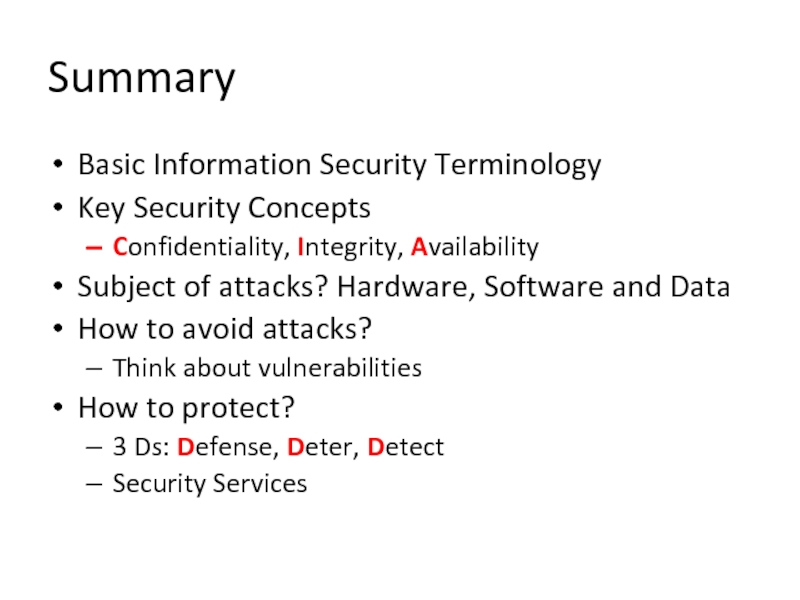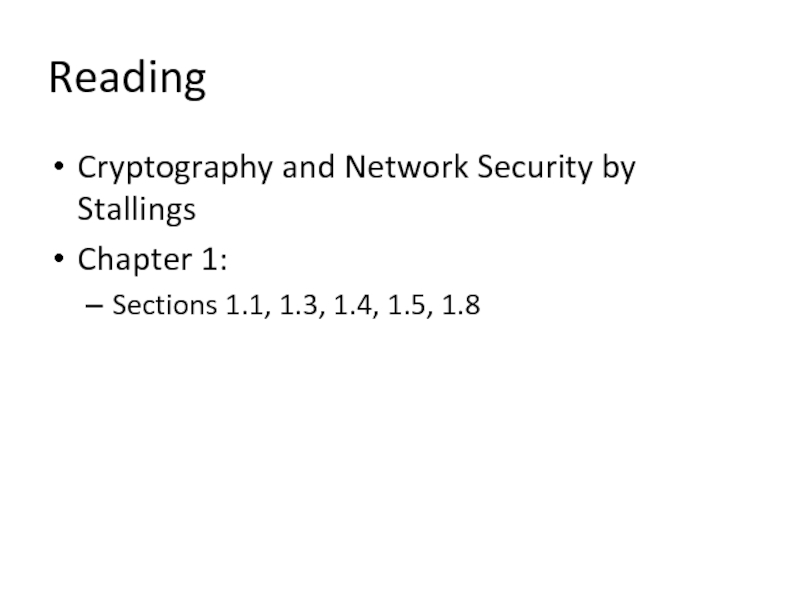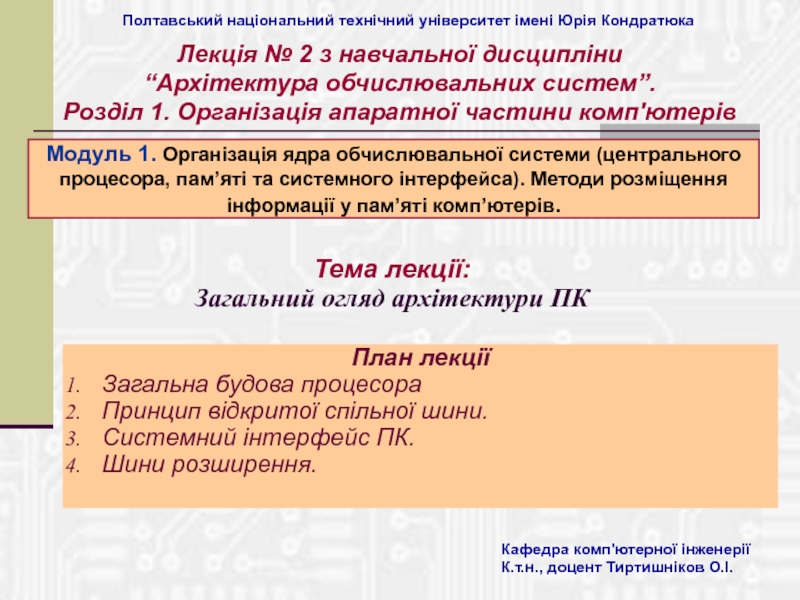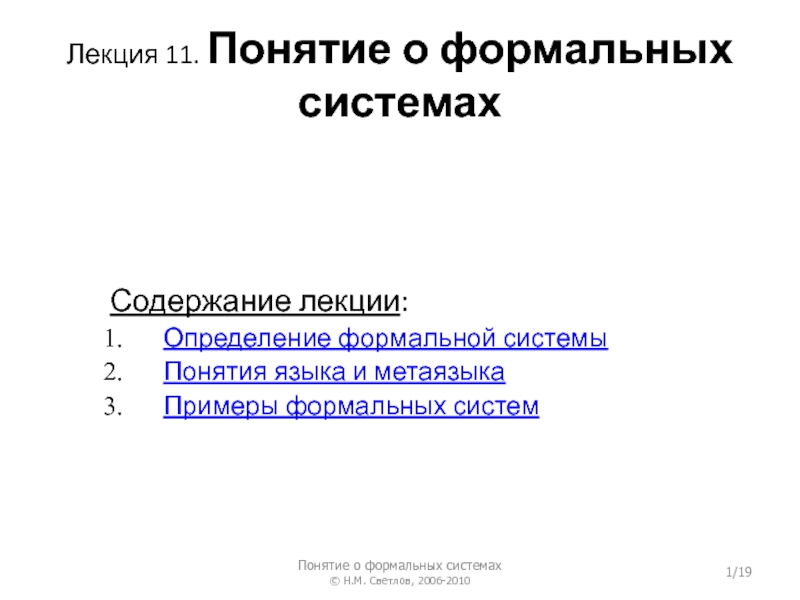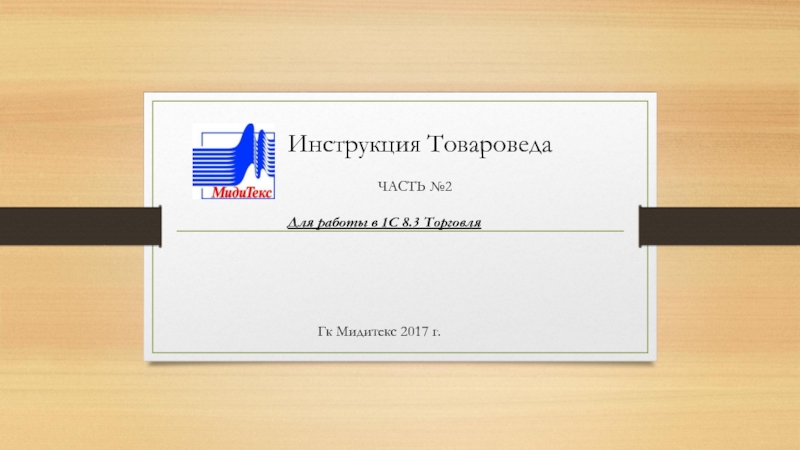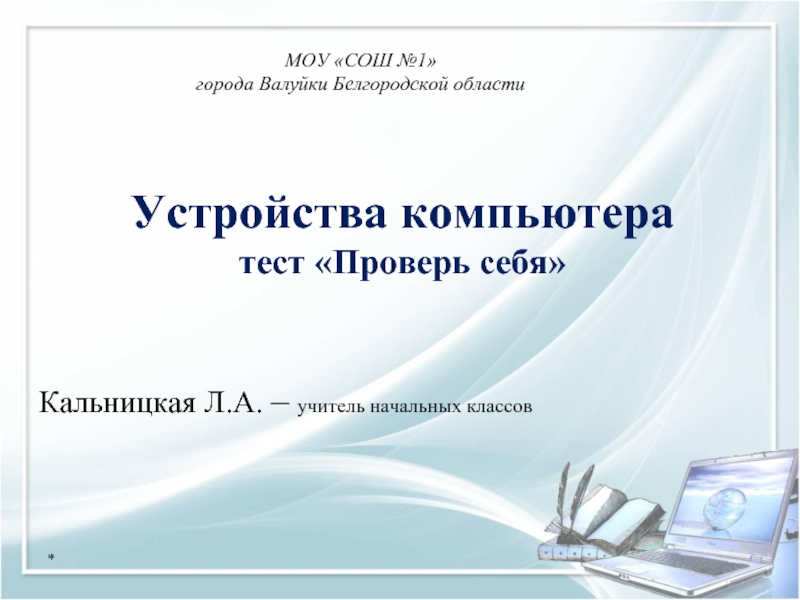Seitkulov
- Главная
- Разное
- Дизайн
- Бизнес и предпринимательство
- Аналитика
- Образование
- Развлечения
- Красота и здоровье
- Финансы
- Государство
- Путешествия
- Спорт
- Недвижимость
- Армия
- Графика
- Культурология
- Еда и кулинария
- Лингвистика
- Английский язык
- Астрономия
- Алгебра
- Биология
- География
- Детские презентации
- Информатика
- История
- Литература
- Маркетинг
- Математика
- Медицина
- Менеджмент
- Музыка
- МХК
- Немецкий язык
- ОБЖ
- Обществознание
- Окружающий мир
- Педагогика
- Русский язык
- Технология
- Физика
- Философия
- Химия
- Шаблоны, картинки для презентаций
- Экология
- Экономика
- Юриспруденция
Introduction to Information Security. Basic Terminology презентация
Содержание
- 1. Introduction to Information Security. Basic Terminology
- 2. Teaching Lectures – by Me (15 lectures
- 3. Some information to help you to take this module
- 4. Course Objectives 15 lectures – one per
- 5. What you can get from this course
- 6. Syllabus at a glance Basic terminology. Classical
- 7. How to take this course: reading Basic
- 8. How to take this course: schedule Attend
- 9. Assessment Overall mark: 30% -
- 10. Questions?
- 11. Basic Concepts and Terminology Vulnerability Threat Attack Security concepts: Confidentiality, Integrity, Availability Security Service
- 12. Vulnerability Some state of the system of
- 13. Threat A statement of an intention to
- 14. 4 kind of threats: Interception Interruption Modification Fabrication
- 15. Interception – unauthorized access to a data.
- 16. Interruption – a data of the system
- 17. Modification – unauthorized, change tamper with a
- 18. Fabrication – E.g. Unauthorized insertion to a existing database. Source: https://genesisdatabase.wordpress.com/
- 19. Attack An assault on system security
- 20. Passive Attacks Source: Cryptography and Network Security by Stallings
- 21. Passive Attacks (cont.) Source: Cryptography and Network Security by Stallings
- 22. Source: Cryptography and Network Security by Stallings Active Attacks
- 23. Source: Cryptography and Network Security by Stallings Active Attacks (cont.)
- 24. Why to attack? (MOM) Method: skills, knowledge,
- 25. Key Security Concepts Used to prevent weaknesses
- 26. Relationship between Confidentiality, Integrity, and Availability
- 27. How to avoid security attacks? Think about vulnerabilities
- 28. Viruses, worms, trojans
- 29. Servers, server rooms, laptops, etc. (Physical Security)
- 30. Data protection The most important thing in majority of information systems
- 31. How to protect? 3Ds of Security Defense
- 32. How to protect? Security Service Enhance security
- 33. Security Services X.800: “a service provided by
- 34. Security Services (X.800) Authentication – assure that
- 35. Security Mechanisms (X.800) Features designed to protect,
- 36. Summary Basic Information Security Terminology Key Security
- 37. Reading Cryptography and Network Security by Stallings
- 38. Questions?
Слайд 1Week1. Introduction to Information Security. Basic Terminology.
Lecturer: Igibek Koishybayev
Prepared by: Zhanbolat
Слайд 2Teaching
Lectures – by Me (15 lectures on a weekly basis)
Labs and
Practical sessions – also by Me
Contact
Email: Igibek@mail.usf.edu
Office 802.
Contact
Email: Igibek@mail.usf.edu
Office 802.
Слайд 4Course Objectives
15 lectures – one per week
Provide overview of Security Principles
Encryption, Network Security, Software Security, Data and Network Protection methods
Laboratory works and Quizzes
Prerequisites:
Information systems
Networking
Programming and Basic Mathematical skills
Слайд 5What you can get from this course
Why protect? What protect? How
protect?
Sorts of threats against modern computers and networks
Network attacks, types of worms and viruses
How the above problems is being solved in the industry
Concepts of encryption, hardware and software protection (firewall, IDS, policies and procedures)
Sorts of threats against modern computers and networks
Network attacks, types of worms and viruses
How the above problems is being solved in the industry
Concepts of encryption, hardware and software protection (firewall, IDS, policies and procedures)
Слайд 6Syllabus at a glance
Basic terminology.
Classical Encryption. Early cryptography. Rotor machines: Enigma
and its relatives.
Block ciphers and the Data Encryption Standard. AES
Basic concepts in Number Theory and Finite Fields
Public Key Cryptography and RSA.
Cryptographic Hash Function
Digital Signatures and Certificates
User Identification and Authentication
Access Control (Authorization)
Network Firewalls
Intrusion Detection System
Block ciphers and the Data Encryption Standard. AES
Basic concepts in Number Theory and Finite Fields
Public Key Cryptography and RSA.
Cryptographic Hash Function
Digital Signatures and Certificates
User Identification and Authentication
Access Control (Authorization)
Network Firewalls
Intrusion Detection System
Слайд 7How to take this course: reading
Basic literature (Required Reading!):
Cryptography and Network
Security by William Stallings, 5th edition, 2006
Security in Computing by Charles P. Pfleeger and Shari Lawrence Pfleeger, 4th edition, 2006
Security in Computing by Charles P. Pfleeger and Shari Lawrence Pfleeger, 4th edition, 2006
Слайд 8How to take this course: schedule
Attend all lectures
Submit assignments on time
Do
not leave until the last minute
Marks will be deducted for late submission (-20% for each day)
Cannot mark what is not there
Plagiarism … will be detected!
For the 1st time, chance will be given with 50% of the total mark
See assignment description for submission date
Marks will be deducted for late submission (-20% for each day)
Cannot mark what is not there
Plagiarism … will be detected!
For the 1st time, chance will be given with 50% of the total mark
See assignment description for submission date
Слайд 9Assessment
Overall mark:
30% - 1st term
30% - 2nd term
40% - Final
Examination
The final version of grading policy will be available soon.
The final version of grading policy will be available soon.
Слайд 11Basic Concepts and Terminology
Vulnerability
Threat
Attack
Security concepts:
Confidentiality, Integrity, Availability
Security Service
Слайд 12Vulnerability
Some state of the system of being open to attacks or
injuries.
Example in house analogy:
“Open Door” is the vulnerability for thieves
Example in house analogy:
“Open Door” is the vulnerability for thieves
Слайд 13Threat
A statement of an intention to injure, damage or any other
enemy action.
A potential for violation of security.
In case of “house” example:
“Loss of Money” is a threat
A potential for violation of security.
In case of “house” example:
“Loss of Money” is a threat
Слайд 15Interception – unauthorized access to a data.
For example,
Illegal copying of
program or data files
Source: https://genesisdatabase.wordpress.com/
Слайд 16Interruption – a data of the system becomes lost, unavailable, or
unusable.
Examples include
Erasure of a program or data file
Malicious destruction of a hardware device
Examples include
Erasure of a program or data file
Malicious destruction of a hardware device
Source: https://genesisdatabase.wordpress.com/
Слайд 17Modification – unauthorized, change tamper with a data.
For example,
Someone
might change the values in a database
Source: https://genesisdatabase.wordpress.com/
Слайд 18Fabrication – E.g. Unauthorized insertion to a existing database.
Source: https://genesisdatabase.wordpress.com/
Слайд 19Attack
An assault on system security
A deliberate attempt to evade security
services
Kind of attacks:
Passive attacks
Active attacks
Kind of attacks:
Passive attacks
Active attacks
Слайд 24Why to attack? (MOM)
Method: skills, knowledge, tools, etc.
Opportunity: time and
access
Motive: fame, money, etc.
Motive: fame, money, etc.
Слайд 25Key Security Concepts
Used to prevent weaknesses from being exploited
Confidentiality – access
only by authorized users; E.g. Student grades
Integrity – modify only by authorized users; E.g. Patient information
Availability – E.g. Users want to check their accounts
Integrity – modify only by authorized users; E.g. Patient information
Availability – E.g. Users want to check their accounts
Слайд 31How to protect? 3Ds of Security
Defense – reducing risks and saving
costs of incidents (E.g. Firewalls, antivirus software, spam filters, etc.)
Deterrence – punishing makes attackers think twice (E.g. Laws, organizational policies and procedures)
Detection – need alert if security incident occurs (E.g. Audit logs, intrusion detection system, network traffic monitoring)
Deterrence – punishing makes attackers think twice (E.g. Laws, organizational policies and procedures)
Detection – need alert if security incident occurs (E.g. Audit logs, intrusion detection system, network traffic monitoring)
Слайд 32How to protect? Security Service
Enhance security of data processing systems and
information transfers of an organization
Intended to counter security attacks
Using one or more security mechanisms
Often replicates functions normally associated with physical documents
E.g. have signatures, dates; need protection from disclosure
Intended to counter security attacks
Using one or more security mechanisms
Often replicates functions normally associated with physical documents
E.g. have signatures, dates; need protection from disclosure
Слайд 33Security Services
X.800:
“a service provided by a protocol layer of communicating open
systems, which ensures adequate security of the systems or of data transfers”
RFC 2828:
“a processing or communication service provided by a system to give a specific kind of protection to system resources”
RFC 2828:
“a processing or communication service provided by a system to give a specific kind of protection to system resources”
Слайд 34Security Services (X.800)
Authentication – assure that communication entity is the one
claimed
Access Control – prevention of the unauthorized use of a resource
Data Confidentiality – protection of data from unauthorized disclosure
Data Integrity – assure that data received is as sent by an authorized entity
Non-Repudiation – protection against denial by one of the parties in a communication
Availability – resource accessible/usable.
Access Control – prevention of the unauthorized use of a resource
Data Confidentiality – protection of data from unauthorized disclosure
Data Integrity – assure that data received is as sent by an authorized entity
Non-Repudiation – protection against denial by one of the parties in a communication
Availability – resource accessible/usable.
Слайд 35Security Mechanisms (X.800)
Features designed to protect, prevent, or recover from a
security attack
No single mechanism that will support all services required
Specific security mechanisms:
Encipherment, digital signatures, access controls, data integrity, authentication
No single mechanism that will support all services required
Specific security mechanisms:
Encipherment, digital signatures, access controls, data integrity, authentication
Слайд 36Summary
Basic Information Security Terminology
Key Security Concepts
Confidentiality, Integrity, Availability
Subject of attacks? Hardware,
Software and Data
How to avoid attacks?
Think about vulnerabilities
How to protect?
3 Ds: Defense, Deter, Detect
Security Services
How to avoid attacks?
Think about vulnerabilities
How to protect?
3 Ds: Defense, Deter, Detect
Security Services
Слайд 37Reading
Cryptography and Network Security by Stallings
Chapter 1:
Sections 1.1, 1.3, 1.4,
1.5, 1.8
